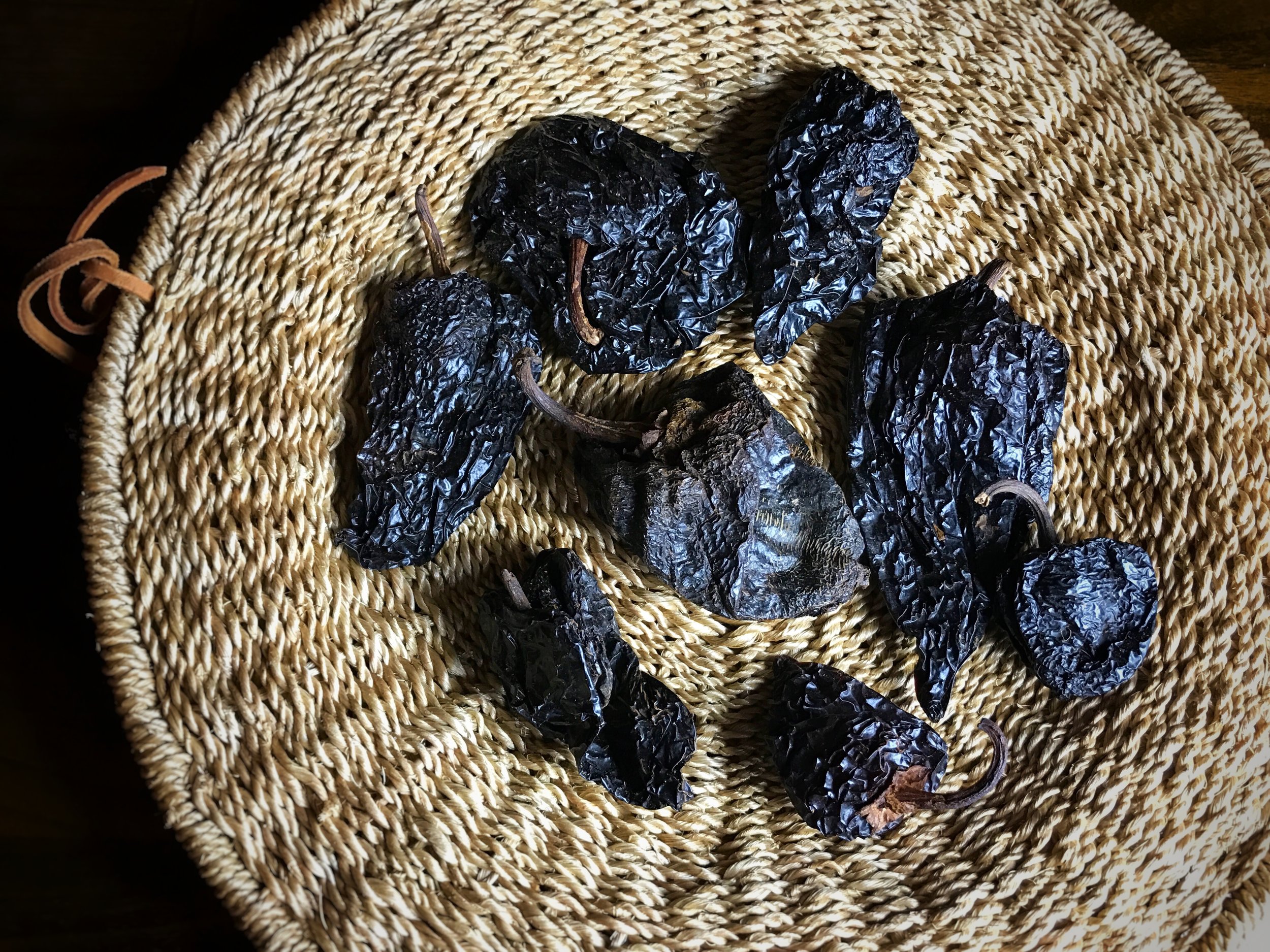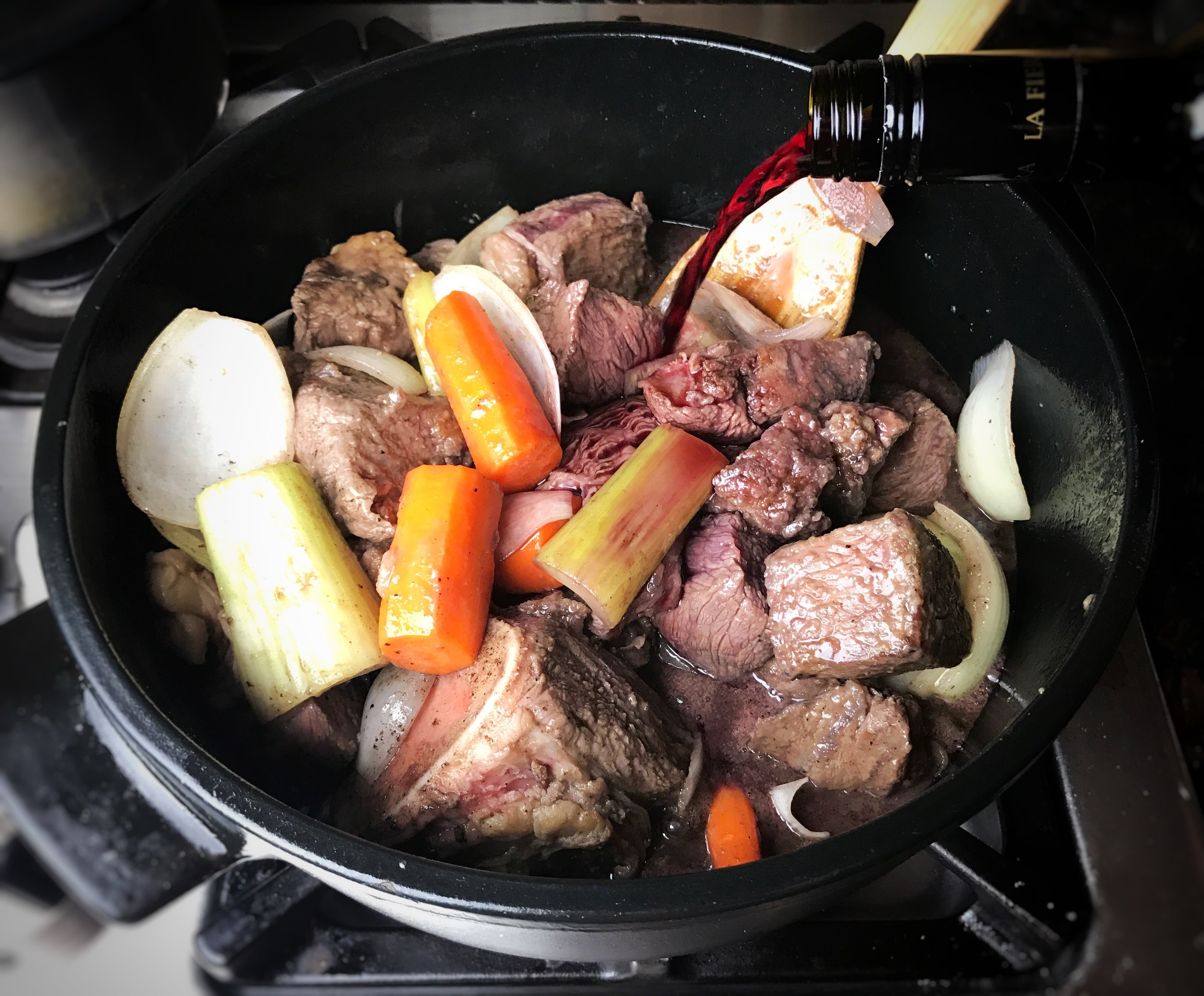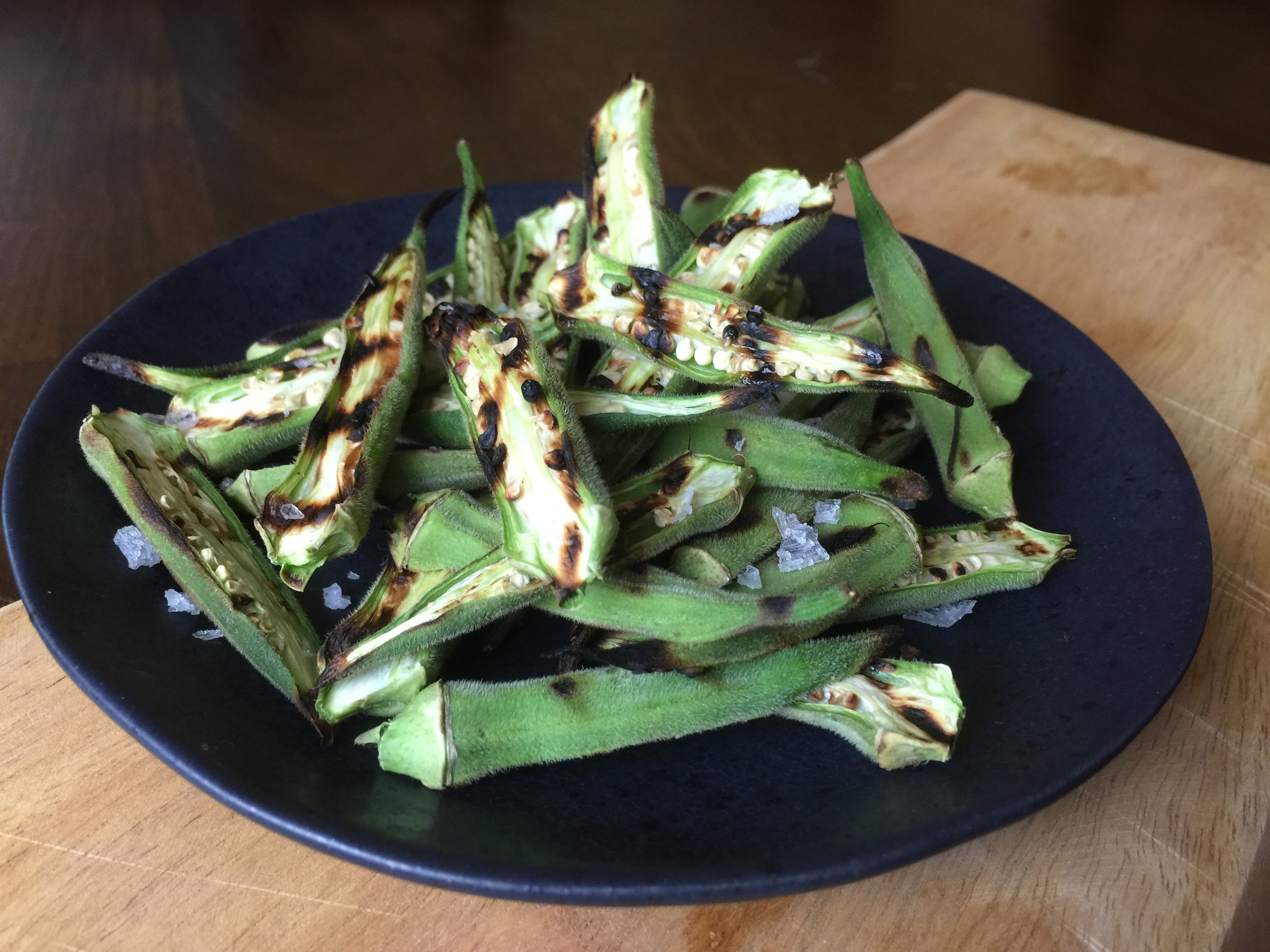If you live in the American South, you know that black-eyed peas bring good luck for New Year’s. Hence the tradition, down where we live, of eating “Texas caviar” — sort of a cold bean salad starring the world’s cutest legume, along with chopped tomatoes, bell peppers, jalapeños, onions and such, dressed in vinaigrette.
And yet the chill of January is when we crave hot, soul-sustaining, legume-happy soups.
At Cooks Without Borders lately we’ve been in the throes of a Middle-Eastern obsession, which largely consists of poring through a few enticing cookbooks on our shelves that we hadn’t yet explored, and madly, impulsively, intrepidly cooking from them.
Two are titles by Claudia Roden, the award-winning Cairo-born, London-residing author: The New Book of Middle-Eastern Food (first published in 1968, and revised in 2000) and Arabesque: A Taste of Morocco, Turkey, & Lebanon (2006).
Taste of Persia, Naomi Duguid’s culinary romp through Armenia, Azerbaijan, Georgia, Iran and Kurdistan had been beckoning to us from the shelf since it was published three years ago, begging to be cooked from. We’d also been itching to explore Salma Hage’s monumental tome, The Lebanese Kitchen (2012), Uri Scheft’s Breaking Breads: A New World of Israeli Baking (2016) and Anissa Helou’s charming book of desserts, Sweet Middle East (2015).
A few years back (following a years-long Yotam Ottolenghi crush) we fell head-over-heels in love with Zahav: A World of Israeli Cooking, by Michael Solomonov and Steven Cook (and we wrote about it here and here).
Batoursh, a Syrian dish that layers lamb cooked with onion and pine nuts with eggplant and yogurt, from Claudia Roden’s The New Book of Middle Eastern Food.
These days, Lebanese and other Middle-Eastern flavors have been front-of-mind again. Wylie, who is now on The Cooks Without Borders R&D and Development Team (lol), graduated from Occidental College in May, and we’re thrilled to have him at home as he’s job-hunting, having earned a degree in Diplomacy and World Affairs. His girlfriend, Nathalie (who also graduated this spring from Oxy, in Psychology), is staying with her parents in Qatar, as she applies to grad school. It turns out Wylie has the cooking gene, not to mention a passion for it, and that passion is perhaps not coincidentally (as Nathalie’s mom is Lebanese and her father is Syrian) expressing itself in a craving for babaganouj and warm pita bread and spice-laden lamb dishes and baklava, and an irrepressible urge to learn how to cook all of it.
So we’ll have plenty of delicious recipes coming to Cooks Without Borders in the near future, from all over the Middle East — a region whose culinary borders are rather more porous than its political ones.
But for now, we celebrate New Year’s — the Julian calendar’s New Year’s, that is. And that brings us back to soups that feature black-eyed peas. We turned up two of them last week, both Persian, both easy to make and both outstanding.
Ash-e-reshteh, a beans-and-greens soup that celebrates the Persian New Year. Naomi Duguid’s version, from Taste of Persia, features black-eyed peas.
The first, from Taste of Persia, traditionally celebrates Persian New Year, Nou-Roz, which is commemorated not in the dead of winter, but (more poetically) on the spring equinox. It’s called “New Year’s Bean Soup” in the book; the subtitle Duguid supplies, ash-e-reshteh, is the name it goes by in Iran.
As the soup is bursting with fresh herbs and greens along with all those soulful legumes and spices and the noodles that give it the reshteh part of its name, it seems to us perfect for the moment. That it happens to be plant-based is a big bonus: It is vegetarian as is, and vegan if you do without the optional yogurt garnish.
The toppings don’t stop at yogurt, though: There are also fried onions, mint oil and saffron water.
We also found a number of other versions of the soup that we can’t wait to try, such as one from Samin Nosrat published in The New York Times last spring. Another, published in 2012 in Saveur is care of Anissa Helou. They all build on greens and beans in varying combos, with piles of different fragrant herbs (fresh mint, dill, cilantro, parsley) going into to each, they all sounds positively dreamy.
More on that later, no doubt. For now, we are enjoying Duguid’s take. Here’s the recipe we adapted:
The second soup, Ab Ghooshte Fasl (Iranian Bean and Vegetable Soup), is one we adapted from a recipe in Roden’s The New Book of Middle Eastern Food.
Ab Ghooshte Fasl (Iranian Bean and Vegetable Soup) is adapted from Claudia Roden’s The New Book of Middle Eastern Food.
Roden calls for either starting with either lamb or beef as a base; we chose lamb. The only real prep involved is slicing an onion, chopping some parsley, dicing an eggplant and a couple of bell peppers and cutting a few potatoes in half, but the delicious effect is outsized: This one’s going straight into our repertoire.
We hope you enjoy it as much as we do; here’s the recipe:
With that, we’d like to say happy New Year from our family at Cooks Without Borders to yours. Thank you for reading, thank you for engaging with us, thank you for returning after we disappeared and came back; we greatly appreciate it and look forward to serving you and feeding you many dishes, stories and photos that we hope will inspire you in the coming year. We wish you a healthy, peaceful, love-filled and delicious 2020!























































